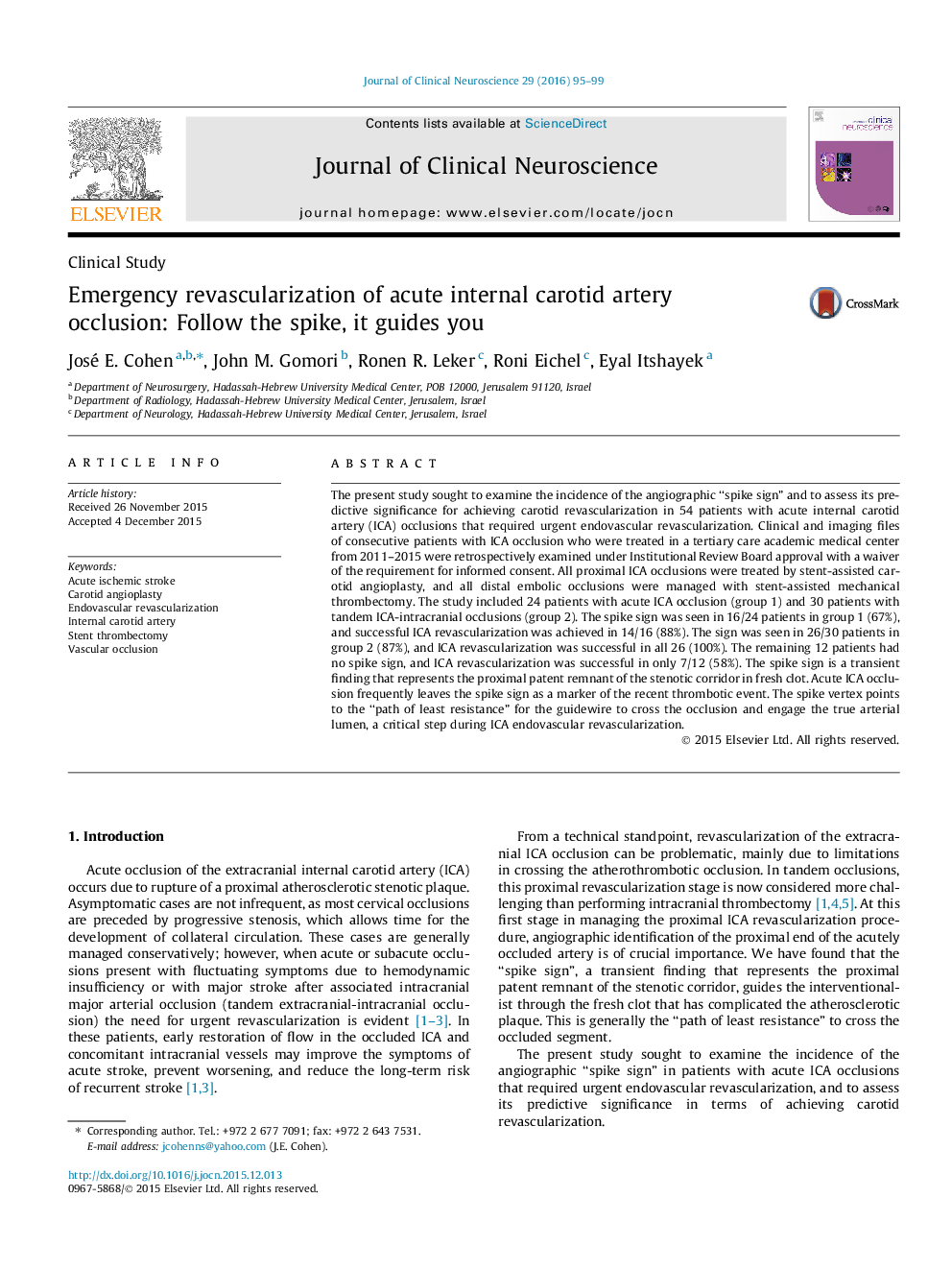| Article ID | Journal | Published Year | Pages | File Type |
|---|---|---|---|---|
| 3058417 | Journal of Clinical Neuroscience | 2016 | 5 Pages |
•The spike sign is a transient marker of a recent thrombotic event in the internal carotid artery (ICA).•The sign represents the proximal patent remnant of the stenotic corridor.•It points to the optimal path to cross the occlusion and engage the true arterial lumen.•The sign was seen in 67% of acute ICA occlusions and 97% of tandem occlusions.•ICA recanalization may be more feasible when the sign is present.
The present study sought to examine the incidence of the angiographic “spike sign” and to assess its predictive significance for achieving carotid revascularization in 54 patients with acute internal carotid artery (ICA) occlusions that required urgent endovascular revascularization. Clinical and imaging files of consecutive patients with ICA occlusion who were treated in a tertiary care academic medical center from 2011–2015 were retrospectively examined under Institutional Review Board approval with a waiver of the requirement for informed consent. All proximal ICA occlusions were treated by stent-assisted carotid angioplasty, and all distal embolic occlusions were managed with stent-assisted mechanical thrombectomy. The study included 24 patients with acute ICA occlusion (group 1) and 30 patients with tandem ICA-intracranial occlusions (group 2). The spike sign was seen in 16/24 patients in group 1 (67%), and successful ICA revascularization was achieved in 14/16 (88%). The sign was seen in 26/30 patients in group 2 (87%), and ICA revascularization was successful in all 26 (100%). The remaining 12 patients had no spike sign, and ICA revascularization was successful in only 7/12 (58%). The spike sign is a transient finding that represents the proximal patent remnant of the stenotic corridor in fresh clot. Acute ICA occlusion frequently leaves the spike sign as a marker of the recent thrombotic event. The spike vertex points to the “path of least resistance” for the guidewire to cross the occlusion and engage the true arterial lumen, a critical step during ICA endovascular revascularization.
